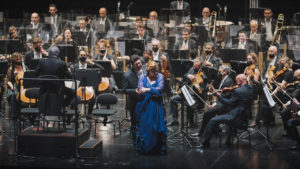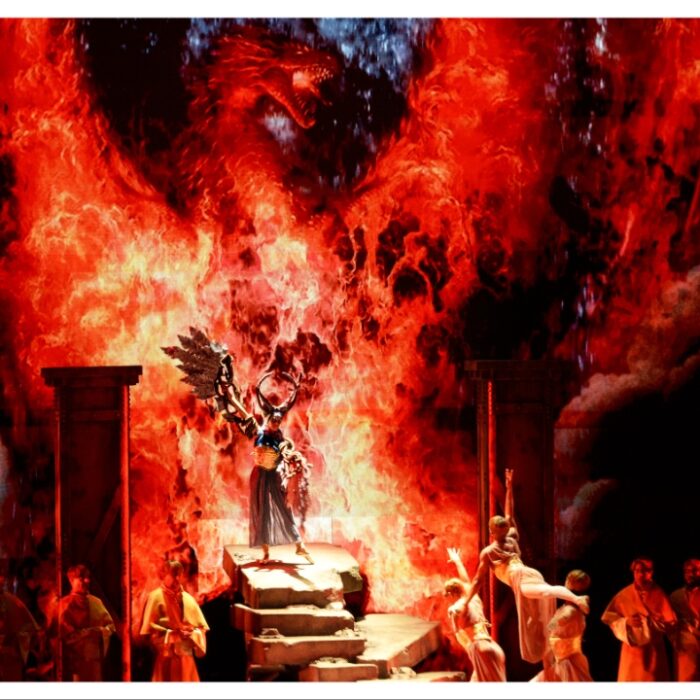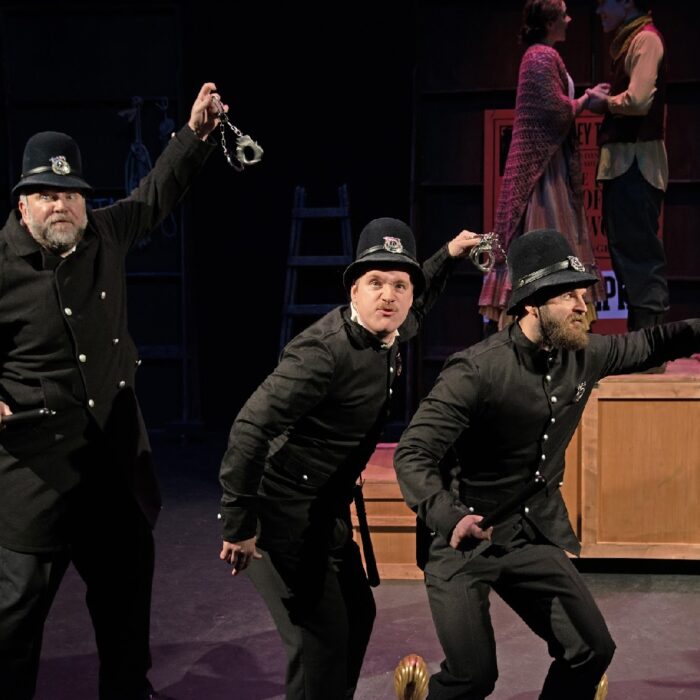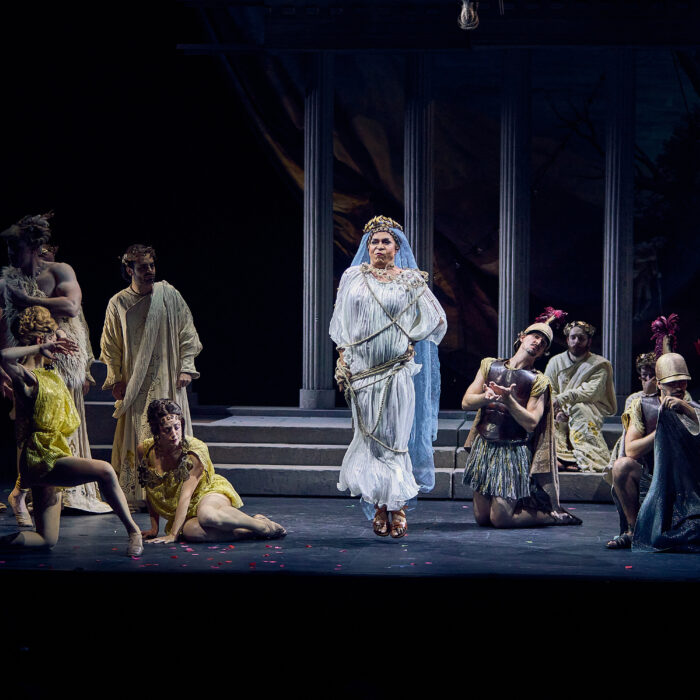
Teatro del Maggio Musicale Fiorentino 2020-21 Review: Tosca In Concert
Zubin Mehta & His Orchestra to Light Up a Post-Covid World With Sensation Performance of Puccini’s Masterpiece
By Polina LyapustinaIn modern Italy, where the operatic art is literally falling apart at both institutional and performing levels, the audience still carries the memory of seeing the greatest operatic performances in history, and is eager to hear anyone who could put all the precious pieces together again.
So, there was no surprise to see the hall of Maggio Musicale Fiorentino filled to the permitted capacity for the first time since the theatre reopened at the end of April. People there knew what they came for — the special magic of Zubin Mehta and his orchestra that was now family to him after 32 years of collaboration.
That night, they played Puccini’s “Tosca” in concert. For some, the concert form used to mean a downgraded performance, but nobody thought like that at Maggio last week. People came to see the podium on stage and dreamed of watching the magic spread from the conductor to the last rows of the orchestra. In Zubin Mehta’s performances, it’s visible, even tangible sometimes.
The 85-year-old Maestro came out to the stage with a cane and you could see him happy and inspired by what was coming (or maybe by those who have come?). One way or another, once the long welcoming applause faded, he didn’t need a cane anymore, he didn’t even need to walk. There, on stage, he was flying. And he easily took the whole large orchestra and his audience with him.
Conducting the Heroes
An interesting feature that I am starting to enjoy in the early post-pandemic performances is that the singers so wonderfully manifested themself through their characters and the roles obtained even greater depth. That night in Maggio worked out wonderfully yet again, but this time, with a twist. When Alessandro Spina, who brilliantly replaced Francesco Milanese in the role of Angelotti, entered the stage, he acted with great artistry, way more impressive than you expect from a concert performance. Yet, he paid loads of attention to Mehta and communicated with him directly and overtly. I caught myself thinking about how effortlessly the great conductor became a part of the narrative without interfering with the development of the plot.
This moment of great acting woven together by sympathetic leadership of the conductor would manifest itself again in the main scenes between Luca Salsi as Scarpia and Francesco Meli as Cavaradossi. The story and characters would only be enriched by this. Vile and insidious Scarpia remains that ugly predator, and yet, we feel how high the stakes are in Scarpia’s losing political game ( as well as in Salsi’s career development — this performance became his pass to accompany Mehta to Salsburg to join a superstar cast just a few days later).
For Cavaradossi, the conductor naturally becomes a divine power, giving him hope and force to overcome any struggles, maybe even death. Meli’s Cavaradossi is almost born out of the modern cliche — the tenor isn’t afraid to use his voice to develop the character. He sounds solid but not all that psychologically mature when held up next to other Cavaradossi interpreters of today. Meli returns gentleness, flexibility, and brightness to this role, which were always there, but we all accepted to lose some dimension of complexity for vocal elegance.
Meli’s “E lucevan le stelle” is his finest hour. His voice is full of depth and manages all the natural rises and falls of emotions effortlessly, drawing a beautiful picture of desperation still filled with the most wonderful feelings of love and hope for a better world. And naturally, the applause didn’t stop for some time thereafter. The Maestro obviously shared the opinion of the audience and when the tenor looked up at him, the conductor asked him something with a satisfied smile. We knew what came next – an encore – leading to more applause. This second attempt was a wonderful example of Meli’s mastery of his voice — sure, the singing was more relaxed and happy under the shining smile of his Maestro, but his Cavaradossi lived through this moment for real once again, with vivid ups and downs, and gentle pianissimos, even better than before.
Saioa Hernàndez became another, more complicated example of how this communication can be built and how it helps to improve the overall performance. In the beginning, her Tosca was simply cold and lacked passion. The soprano seemed stressed and the fact her voice, like Meli’s tenor, was a bit unusual for the role made it all the more problematic. She made up for pressure and her perceived insecurities with rigor, severity, and restraint. This tension was also felt between her and the conductor, who paid great attention to her every note and gave short feedback after every significant part throughout the first Act.
By Act two, the soprano hit her vocal peak. Or maybe her strict approach was perfect for the confrontation with Scarpia? One way or another, her “Vissi d’Arte” was solid and certainly opened up new, truly vivid facets of the character. And by the end of the performance, she certainly took over as the central figure in the performance.
Together
The Orchestra del Maggio managed for the first time (at least in my experience of live performances of “Tosca”) to pull this piece out from the depth of the dark ages of Italian history to the modern stage without changing it beyond recognition. The conductor’s reading of the score that night was just luminous, and I liked to imagine how it has changed in almost 60 years of his performances of ‘Tosca.” The slightest wave of the conductor’s hand caused major but smooth changes in the sound immediately. The orchestra that night was in excellent shape, and the ensemble’s sound was lush and powerful, balancing beautifully with the singers’ sound, even enriching and highlighting the soloists.
There obviously were more participants on stage that evening: the wonderful Sacristan of Alfonso Antoniozzi, a striking Spoletta (Francesco Pittari) and Sciarrone (Giulio Mastrototaro), Adolfo Corrado’s vocally precise Jailer (Adolfo Corrado), and the beautiful Shepherd of Costanza Mottola, whose youthful and vibrant part refreshed the audience after the most dramatic moments of the work.
Together, these musicians and artists created an amazingly solid picture of the performance which is so hard to call just a concert. This was a night full of acting, art, music, and singing, but most importantly, a night of communication and appreciation among everyone on and offstage. When the artists came out for their curtain call, we saw this feeling among them as clearly as we saw the emotions of their characters and their music minutes before. But now, they did not play. The orchestra, singers, and Maestro Mehta came for this sincere and happy feeling of appreciation – to receive and give to each other and to their audience.


